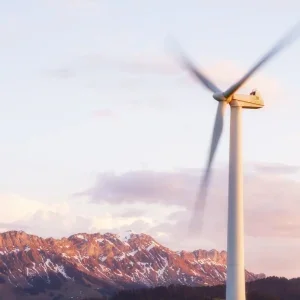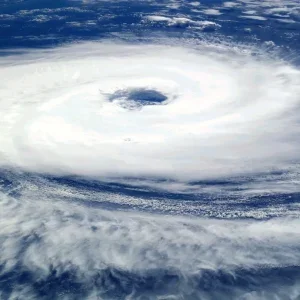
The global push for renewable energy sources has seen a significant rise in wind energy investments. Wind power is a crucial component of the transition to a sustainable energy future, offering a clean, inexhaustible resource. However, the geopolitical landscape, marked by interstate armed conflicts, poses substantial challenges to the wind energy industry. This article explores the impact of interstate conflicts on wind energy, examining risks, mitigation strategies, and the potential for wind energy to contribute to energy security and peacebuilding.
The Geopolitical Context of Wind Energy
Importance of Wind Energy
Wind energy is one of the fastest-growing renewable energy sources worldwide. It plays a critical role in reducing carbon emissions, diversifying energy portfolios, and enhancing energy security. As countries strive to meet climate targets, the expansion of wind energy infrastructure becomes increasingly vital.
Geopolitical Instability and Armed Conflicts
Interstate armed conflicts, defined as military conflicts between sovereign states, can have far-reaching impacts on various industries, including wind energy. These conflicts often stem from territorial disputes, resource competition, and political rivalries. The presence of wind farms in conflict zones or politically unstable regions poses significant operational and strategic risks.
Impact of Interstate Armed Conflict on Wind Energy
Disruption of Supply Chains
Interstate conflicts can disrupt the complex global supply chains essential for wind energy projects. Components for wind turbines, such as blades, nacelles, and towers, are often sourced from different countries. Conflict-induced trade restrictions, transportation blockages, and damage to infrastructure can delay or halt the delivery of these critical components.
Security Risks for Installations
Wind farms, especially those located near conflict zones, face heightened security risks. These installations can become targets for sabotage or collateral damage during military operations. Ensuring the physical security of wind energy infrastructure in such environments requires substantial investment and strategic planning.
Financing and Investment Challenges
The financial landscape for wind energy projects is heavily influenced by geopolitical stability. Interstate conflicts can deter investors due to heightened risks, including potential loss of assets and revenue instability. Uncertainty in conflict-prone regions can lead to increased costs of capital and insurance, making projects less attractive financially.
Case Studies of Conflict-Affected Wind Energy Projects
Eastern Europe: Ukraine and Russia
The ongoing conflict between Ukraine and Russia has had significant implications for the wind energy sector in Eastern Europe. Ukraine, with substantial wind energy potential, has seen disruptions in project development and operations due to the conflict. The geopolitical tensions have led to challenges in securing investment and maintaining stable operations.
Middle East: Israel and Neighbouring States
Israel, surrounded by geopolitical tensions, has been cautious in expanding its wind energy portfolio. While the country has made strides in solar energy, wind energy projects face challenges due to the potential threat of conflict with neighbouring states. This geopolitical risk impacts investor confidence and the strategic planning of wind energy development.
Mitigation Strategies for Wind Energy in Conflict Zones
Diversification of Supply Chains
To mitigate the risks associated with supply chain disruptions, the wind energy industry can diversify its sourcing strategies. By establishing multiple suppliers and manufacturing hubs in politically stable regions, companies can reduce dependency on any single source. This approach enhances resilience against geopolitical disruptions.
Enhanced Security Measures
Investing in robust security measures is essential for protecting wind energy infrastructure in conflict-prone areas. This includes physical security enhancements such as fortified structures, surveillance systems, and collaboration with local security forces. Additionally, developing comprehensive risk assessment and emergency response plans can help manage potential threats.
Strategic Site Selection
Careful site selection can minimise the risks posed by interstate conflicts. By prioritising locations with lower geopolitical risks, companies can safeguard their investments. Furthermore, offshore wind farms, located away from potential conflict zones, offer an alternative that mitigates some of the risks associated with land-based installations.
The Role of Wind Energy in Promoting Peace and Stability
Reducing Resource Competition
Wind energy, as a renewable resource, can play a role in reducing competition over finite energy resources, which is often a driver of interstate conflicts. By providing a sustainable and abundant source of energy, wind power can contribute to alleviating tensions over energy scarcity.
Economic Development and Stability
The development of wind energy projects can stimulate economic growth and create jobs, contributing to regional stability. In conflict-affected areas, the economic benefits of wind energy can provide an incentive for peacebuilding and cooperation. Investments in renewable energy infrastructure can foster economic interdependence, reducing the likelihood of conflict.
Energy Independence and Security
Wind energy can enhance national energy security by reducing dependence on imported fossil fuels, which are often subject to geopolitical tensions. By investing in domestic wind energy capacity, countries can achieve greater energy independence, insulating themselves from the impacts of interstate conflicts over energy resources.
Future Outlook: Navigating Geopolitical Risks
Technological Advancements
Technological advancements in wind energy can help mitigate some of the challenges posed by interstate conflicts. Innovations in turbine design, materials, and installation techniques can enhance the resilience and efficiency of wind farms. Additionally, improvements in grid integration and energy storage can bolster the stability of wind energy supply in volatile regions.
International Cooperation and Policy Frameworks
International cooperation and the development of robust policy frameworks are crucial for managing geopolitical risks in the wind energy sector. Multilateral agreements and partnerships can facilitate the sharing of best practices, risk management strategies, and technological innovations. Strengthening global governance structures can also enhance the stability and security of international energy markets.
Resilient Business Models
Developing resilient business models that account for geopolitical risks is essential for the sustainable growth of the wind energy industry. This includes incorporating risk management strategies, diversifying investment portfolios, and engaging in proactive geopolitical analysis. By anticipating and planning for potential conflicts, companies can better navigate the challenges of operating in a complex global environment.
Conclusion
Interstate armed conflicts present significant challenges to the wind energy industry, impacting supply chains, security, and investment. However, with strategic planning, technological innovation, and international cooperation, the industry can mitigate these risks and continue to thrive. Moreover, wind energy has the potential to contribute to peace and stability by reducing resource competition, promoting economic development, and enhancing energy security. As the world transitions to a more sustainable energy future, navigating the geopolitical landscape will be crucial for the success and resilience of the wind energy sector.






